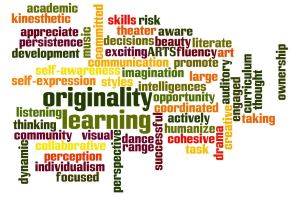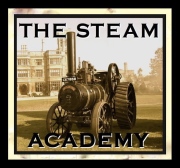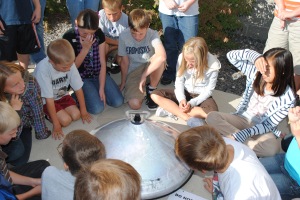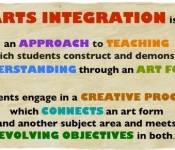
Arts Education – When Will We Be Heard?
The arts play critical role education. When learning is approached through, with and by the visual and performing arts, creativity is cultivated, innovative thinking is fostered and imagination is both celebrated and enhanced. Learning occurs with far greater depth and breadth, thereby increasing retention, comprehension and academic achievement. Student engagement, intrigue, higher order thinking skills and motivated pursuit of lifelong learning are catalyzed. The effects upon students’ social, emotional and cognitive growth are tremendous and invaluable. Moral, practical and ethical character traits are developed and strengthened. Culture- our humanity, is celebrated, developed and perpetuated.
Without these significant and research-proven effects, the progress of our society is severely impeded. This is no longer theory; We’re now watching the predictions of arts education proponents unfold, and at a rapid rate.
Yet still… we’ve seen nothing but degeneration in the presence of and given value to the arts in education. Perhaps we ought to call them something different? Maybe then, they will listen, they will respond, they will act… they will search creatively for ways by which to provide the arts, for all.
So, why not call it Creativity Education? Or, simply Comprehensive Education? Enriched Comprehensive Education? Superior Academic Achievement Socially Emotionally Healthy Successful Service-Oriented Strong Character Global Citizen Empathy Fulfillment Violence Prevention Creativity Innovation Problem-Solving Critical-Thinking Education? Naa, that’s too long. But still, it doesn’t touch come close to outlining all of the proven benefits of comprehensive arts education.
So, yes-
comprehensive fine arts education accomplishes far more than cultivating creativity in youth, but because it’s name has apparently been such a detrimental stumbling block to its due role and sustainability in education, it’s high time we begin calling it something that may at least appeal to SOME education policy decision-makers. Unsuccessful in so doing thus far have been extensive longitudinal studies by every sort of expert conceivable, countless education publications, educator, parent and student testimonials, etc., etc… even the craftiest and most creative / extreme or otherwise unique approaches have been attempted by the arts advocacy world, to little or no avail. There exists literally more undisputed research and other evidence than can be reviewed by a person over the course of a lifetime. Essentially, the ongoing neglect of the arts in education is absolutely mind-boggling. Perplexing. Confounding. And grossly underestimated are the devastating implications of this neglect. Some, like New York City Board of Education’s Mark Naison, go to the extent of calling it child abuse.Shouldn’t that sound somebody’s alarm up there in the la la land of Ed policy-making?
Since I mentioned him, I’ll leave you with a few words that Dr. Mark Naison said:
“When public schools are judged by how much art and music they have, by how many science experiments their students perform, by how much time they leave for recess and play, and by how much food they grow rather than how many tests they administer, then I will be confident that we are preparing our students for a future where they will be creative participants and makers of history rather than obedient drones for the ruling economic elite.”
Snippets of My Online Ramblings, Part I
“The arts play critical role education. When learning is approached through, with and by the visual and performing arts, creativity is cultivated, innovative thinking is fostered and imagination is both celebrated & enhanced. Learning occurs with far greater depth and breadth, thereby increasing retention, comprehension and academic achievement. Student engagement, intrigue, higher order thinking skills and motivated pursuit of lifelong learning are catalyzed. The effects upon students’ social, emotional and cognitive growth are tremendous and invaluable. Moral, practical and ethical character traits are developed and strengthened. Culture- our humanity, is celebrated, developed and perpetuated. Without these significant and research-proven effects, the progress of our society cannot be ensured. Yet still… we’ve seen nothing but degeneration in the presence of and given value to the arts in education. Perhaps we ought to call them something different? Maybe then, they will listen, they will respond, they will act… they will search creatively for ways by which to provide the arts, for all…”
“The Creativity Crisis in the U.S. is very REAL. Creativity is being suppressed in today’s schools rather than cultivated and nourished. Innovation and progress is being stifled. Meaningful, purpose driven and effective learning has become a novelty. We’re starving for culture and healthy modes of expression. We’re thirsting for purpose and meaning as we’re neglecting to foster the creativity that is innate in us all. Humanity is dying. Employers already are complaining that college graduates are lacking the social skills, resourcefulness, critical thinking and other vital skills needed for success, employment and fulfillment. The starving artist population is growing, reflecting a society that increasingly undervalues the tremendous power and potential of the arts. There are solutions, but your cheerleading is insufficient- your active help is needed. Don’t wait for someone to tell you what you can do… start asking around- you won’t have difficulty finding a need that’s waiting to be filled.”
TEACH WITH THE ARTS, ALREADY, WILL YA? GEEEEZ…..
Despite the tremendous positive impact that they make upon education, visual and performing arts programs are consistently among the first to be cut. To those who are well informed, this is baffling, as integrating the arts into curricular instruction is the single most effective approach to teaching and learning available- and that’s a research-proven fact. In addition to enhancing our learning and retention across disciplines, the arts teach us to effectively communicate. They foster our creativity and develop our critical thinking and problem-solving skills. The arts teach us empathy, compassion, collaboration and cooperation- and they help us to express that which we cannot convey otherwise, like our individualism. They heal us- emotionally and physically. Research even shows that students who are involved in the arts throughout their youth are far less likely to commit violent crimes as adults. The arts are the tools that enable us to enrich our culture, further the progress of our society and generate tomorrow’s problem solvers. Ultimately- the arts convey our humanity.
So, my question to educators and school administrators is this…. WHY THE JUNK ARE YOU NOT INTEGRATING THE ARTS YET???? …and don’t you dare tell me that it is because of budget issues. Total cost to integrate the visual and performing arts into your curricular instruction: $0.00 / year. Doubt it? DON’T! I did it for a decade!
Thank you for your inspiring and important service, Kathy DuPuis. You made a difference and your influence lives on. You’ll be greatly missed.
We lost a good friend and warrior for public education this week. She came home from a long trip, tired and worn out, logged onto her computer and commented on a Diane Ravitch blog,
She then posted it as a link on her Facebook, laid down to rest … and left us.
Rest in Peace, Kathy DuPuis – mother, educator, union sister, fellow activist and co-admin of Wear Red for Ed.
.
Rest easy, Kathy, and know that you did not go gentle into the night. Go knowing your last words will be remembered and honored. Go easy and know… we will not give up.
Peace and Blessings.
Art, Reality and Violence

an examination of creative passion
Transforming Reality Through the Arts
©2012 by Coni Ciongoli-Koepfinger
Does art reflect our reality or does our reality reflect our art?
The human imagination has kindled a plethora of ideas that have manifested into real structures – buildings, bridges, cars, and new technology. In addition, humans simulate realities that are akin to desires, wants, needs by producing music, fine art and literature. Does the reception of our thought patterns elucidate our visual pictures? Or does the perception of those visual pictures that surround us in our daily lives create the thought waves that then signal the internal screen for playback in the imagination? However we choose to describe it, we must try to grasp the fact that we are attempting to dissect a process that is in a constant state of flux.
Psychosclerosis, a “hardening of the attitudes” has certainly infected a major portion of the American culture. As we welcome the 21st century, its resulting side-effects include a physique so grotesque that the wasting of human life has become more than a past-time. The once repulsive compulsion to kill fellow humans has evolved into a sport via video gaming. Civilization is becoming its own endangered species because we have allowed our media to become mediocre… Villains are glamorized as heroes for taking potshots at a passersby. This scenario not only makes the top story on the nightly news, but also somehow disguises itself as dramatic possibility and is often sold for a high price as tempting contraband. Actually, aesthetics tells us that these “true-life dramas” are not dramatic by content or nature, nor do they represent the truth of life in any way. Not to mention that they are hardly charming or interesting. Yet, the “hardened attitudes” of the modern audience seem to really lap this up. Theses stories are stained with real human blood. They are spoiled, curdled to an unhealthy point. In truth, they are poisonous and can be fatal to the mind, the body and the spirit.
Like scientists examining a culture of bacteria in a petri dish, we need to scrutinize how the first cells of art and culture start to form. A thought drifts into the human mind. As each thought enters the body it vibrates into a “feeling.” As the thought passes through its feeling stage, it collects the energy to move into action. However, psychology tends to reverse this pattern, looking at behavior from the action stage, back to the feeling, and then to the thought stage. I propose that through examination of the creative process (tracking forward from thoughts into actions) we might be able to avoid much of societal despair. What I am suggesting is that by learning how to engineer the process that creates the art, we can then begin examining the process that constructs the social formations that create our realities. We realize that the disaster stories in the nightly news can document our reality into fiction – and our fears into a potential for even more disasters. Perhaps we need to find an approach that will be able to transcend the limits of ordinary reality, one that lets us break through the barriers of time and space. It is then possible to bridge the gap between the real and imaginary, between sociology and art, with a new set of blueprints and patterns of words? We know that words effect us; they make us think and they make us feel certain ways in certain situations. We have seen how the media is using this to its own advantage. And often our media images depict humanity in a somewhat bleak and dismal setting. Yet, could it be that art might be the best deliverance from that possible eventuality?
My particular response to this question is a new approach to pedagogy called “Formative Stages” that explores the purpose, scope and nature of the creative process. The creator arrives upon the art “form, and begins the “form”ative creative process – re”forming”, con”forming”, de”forming” the work until he or she finds just the correct formula that works as the creative solution. Above all, the theatrical setting forms words into living realities, allowing audiences to think and feel simultaneously, breaking the bonds of alienation and communicating the transformative power of the creative process.
I hope to gain further insight on the primordial picture of art by studying the process that weaves words and other elements artistically into a fabric transparent to the “either/or” mentality – until imagination and reality are at last synthesized. Upon completion of my academic / creative research, I plan building a network of new art that will create a brighter reality by the formation of words into living realities. The formation of words in literature employs an unencumbered process. Through the very core of its structure, it permits us to delve into alternative models of human experience. It enables us to be in two realities at once, one real, one imagined. In literature we may find the roots to the same cultural processes used in the development of social structures. I’d like to suggest that the initial link between art and sociology is the movement between. It is thus actualized by the very essence of the conjunction “and” which allows the process of vacillation between them. If cultivated properly, art just might be a deliverance from division. If we can use the ampersand to sculpt society through the artistic process, the divisions will eventually fade. But first, the artistic approach must be accepted into mainstream reality. The business departments, the industrialists must look to the way of the artist, and accept the artist’s way as more than frivolous, recognizing the tremendous transformative power in art. Looking back to the beginning surge of the Industrial Revolution, society started to automate and expand its physical strength through mechanical transformers. Now it must expand its imagination. We need to take a revised look at art as a science, and see the science of life, in its rawest formations breed into art.
Maybe the creation of a society that questions the reality of its fiction and the fiction of its reality is only a page turn away. Conceivably it is no longer a question of controlling what is real; instead, is it a question of controlling the market analysis that controls what the individual assumes to be real? Perhaps then, we will able to give birth to the new science that is no longer bipolar in its relations of the art and the social – a new science that is born out of a culture that was modified to be the perfect blend of both fact and fiction.
ABOUT THE AUTHOR – Coni Ciongoli-Koepfinger is a professor at Carnegie Mellon University and a research fellow at the Hybrid Reality Institute at CUNY. She sits on THE STEAM ACADEMY’s Curriculum and Programs Development Committee and Executive Board of Directors. Currently, Coni is also working in collaboration with composers Joe Izen and Joe Kelly on a socially significant theatre project that explores the potential of man’s creative interaction with technology in the aftermath of singularity.
WHAT ARE WE UP TO?
THE STEAM TEAM, an international collaboration of educators, researchers, artists, scientists, and other valued individuals sharing our vision are developing a revolutionary, global education model for education. We’re devoted to our vision of producing and packaging our curriculum and proven instructional methods in a manner that will provide free, online access to innovative and progressive K-12 education to educators and families worldwide.
Through our “Schools That Work” model curriculum of integrated fine arts and technology, project based, collaborative learning, international student peer relations and unique focus on service oriented living, THE STEAM ACADEMY will foster student expression, social and emotional health and cultivate creativity, ingenuity and global awareness. Each student will grow tremendously as we deliver enriched, individualized and engaging instruction of the national core curriculum while paying special attention to the skills students will need to become successful and fulfilled adults of the 21st century.
Students will graduate having immovable, strong moral character, cultural perspective, unparalleled social strength, humility and confidence as they enter the world having achieved excellence in academics, entrepreneurial thinking, problem solving, critical thinking and engaged social responsibility.
We’re working to create a place of learning that is a reflection of the world at large- a microcosm of what life will bring and how it will come, so as to best prepare our resourceful and proactive future leaders.
Because of our shared belief that the visual and performing arts are vital to the effective, thorough education of any student, THE STEAM TEAM is also dedicated to the implementation of comprehensive fine arts education in the United States and abroad. In collaboration with accomplished, talented visual and performing artists, we’ve created United Artists Foundation. The current initiatives of United Artists Foundation involve supplementing existing schools in the United States with enriching arts education experiences. We’re also looking forward to collaborating with international organizations and educational entities so as to support any and all efforts to integrate and infuse the arts into the instruction of students worldwide.
Related articles
- United Artists Foundation ~ Artists Supporting the Arts in Public Schools (thesteamacademy.wordpress.com)
- STEAM ACADEMY – An Innovative Approach to Global Education (thesteamacademy.wordpress.com)
- International Collaboration ~ Student “Solutionaries” (thesteamacademy.wordpress.com)
- Why I love project-based learning (shelleywright.wordpress.com)
International Collaboration ~ Student “Solutionaries”
The STEAM Academy and Global Children’s Village are teaming up to present one of the most innovative and practical educational programs in the world. Using thinking and learning methodologies from both the sciences and the arts, scientists and fine artists of all kinds will collaborate with learners of all ages all over world in creating projects that not only educate the whole child, but that also solve problems found in our communities and in the world.
The first step in our global initiative will be to identify 8-12 schools all over the world in which to initialize our programs. In each school, at least one local scientist from an institution of higher learning or from a community corporation will be teamed with a fine artist. This pair will visit a specific classroom or school and collaborate with the learners to create a project with both science and art components. Each project at each school will target a particular social, health or infrastructure problem such as creating clean water or promoting community health through vaccines or through better habits. As learners solve problems in their communities and in the world, they will be developing a variety of thinking, planning and teamwork skills from the fine arts and from STEM processes. The result? Problems solved. Kids educated- well. Our shared vision of preparing youth to become local, national and global “solutionaries,” a term coined by social educator Zoe Weill, will begin to be realized.
Yes, such revolutionary approaches to education will prepare students to master core knowledge and skills. Our ultimate goal, however, is not to simply help students pass tests. It is not to only to ensure that learners will graduate from high school, enter college and go on to lead successful careers. We are preparing students to enter the world with talents and skills that will help them to solve the problems caused by generations past and perpetuated, even worsened, by us. Essentially, it is our responsibility to ready our children to save the world- and us.
Related articles
United Artists Foundation ~ Artists Supporting the Arts in Public Schools
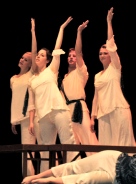 We bring the arts to schools immediately by hiring and aligning teaching artists with schools throughout the country for intensive, two-week “artist in residencies.” We also work with advocacy groups, focusing our energy and resources in our efforts to reinstate in public schools the teaching positions of full time arts education specialists. Training professional artists to become teaching artists, enabling us to employ them for public school workshops and artist in residencies is also among our organizational objectives.
We bring the arts to schools immediately by hiring and aligning teaching artists with schools throughout the country for intensive, two-week “artist in residencies.” We also work with advocacy groups, focusing our energy and resources in our efforts to reinstate in public schools the teaching positions of full time arts education specialists. Training professional artists to become teaching artists, enabling us to employ them for public school workshops and artist in residencies is also among our organizational objectives.
Our vision is to conquer two pervading and seemingly perpetual cultural crises- that of the questionable nature of the fine arts being an essential component of a comprehensive, highly effective education and also of the need for our fine artists to be employed and to be properly recognized as contributors to our cultural progression.
The visual and performing arts play an essential role in education. Due to the circumstances of public education policy and the prioritization of funding, most students across the United States and abroad are not receiving the education that is deserved.
Gaping holes exist in our public schools with regards to comprehensive and enriching fine arts programs. In most classrooms, the visual and performing arts are not being integrated into instruction of the core curriculum.
Furthermore, multicultural fine arts are severely under appreciated in our current society. Visual and performing artists of all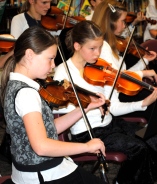 genres tend to suffer financially, unless of course they are of the rare group that happens to find great success in doing that which is their passion. Achieving stability in an arts related field has even become very difficult. Now more than ever before, fine artists are constantly in search of income from jobs relating their talents.
genres tend to suffer financially, unless of course they are of the rare group that happens to find great success in doing that which is their passion. Achieving stability in an arts related field has even become very difficult. Now more than ever before, fine artists are constantly in search of income from jobs relating their talents.
We are a highly collaborative organization and we invite strategic partnerships and alliances with other non-profit organizations, businesses and individuals. There is power, success and fulfillment to be found when we align and creatively develop programs and strategies. We therefore we are always aiming to find logical and mutually beneficial relationships.
There are so many ways that you can help us in our efforts in bringing the visual and performing arts into schools NOW. For more information on how to support this important work, please email: KidsNeedTheArts@gmail.com
Follow us on Facebook: http://www.facebook.com/Music.Drama.Dance.Visual.Arts
Follow us on Twitter: http://www.twitter.com/KidsNeedTheArts
Related articles
- How to Make America Innovative, Competitive, and Prosperous
- John M. Eger: The Future of Business Is the Arts
- Why Integrate the Arts into the Classroom? Part 3
- Why Integrate the Arts into the Classroom? Part 2
- Why Integrate the Arts into the Classroom? Part 1
- You Say You Want a Revolution: Notes on Arts, Education, and Crisis
- Neuroscience and the Arts
- ArtsSmarts: Engaging children and youth in the creative process
- The Arts are the Key
- I See, I Think, I Wonder
STEAM ACADEMY – An Innovative Approach to Global Education
STEAM ACADEMY is an innovative, progressive, online k-12 school of creativity, ingenuity and global awareness. Through our model curriculum of integrated fine arts and technology, project-based, collaborative learning, international student collaboration and unique focus on service oriented living, institutions of learning, educators, parents, and all who implement STEAM ACADEMY methods and resources will in effect, foster student creativity, expression, cultural perspective and global competence.
STEAM students will grow tremendously as their teachers deliver enriched, individualized and engaging instruction while paying special attention to the skills students will need to become successful and fulfilled adults of the 21st century. STEAM ACADEMY gives teachers and schools the tools necessary to create a place of learning that is a reflection of the world at large – a microcosm of the world at large – preparing students not only for what life will bring but more importantly, preparing them to be resourceful, proactive leaders and global “solutionaries.”
Breadth of Courses
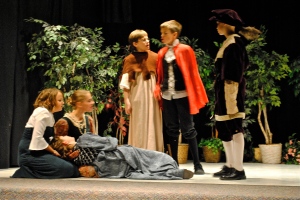 At the heart of STEAM ACADEMY is the full infusion of the visual and performing arts, innovative technology integration and a strategic focus on STEM learning. Of equal significance to our model is the skill development and facilitation of knowledge and perspective in the social studies, language arts and humanities. We are dedicated to offering a wealth of choices and opportunities for students to cultivate their talents and to creatively express their passions. All genres of music, dance, drama and visual arts augment the instructional methods of both required and supplemental curricular studies.
At the heart of STEAM ACADEMY is the full infusion of the visual and performing arts, innovative technology integration and a strategic focus on STEM learning. Of equal significance to our model is the skill development and facilitation of knowledge and perspective in the social studies, language arts and humanities. We are dedicated to offering a wealth of choices and opportunities for students to cultivate their talents and to creatively express their passions. All genres of music, dance, drama and visual arts augment the instructional methods of both required and supplemental curricular studies.
A wide variety of elective classes are suggested and encouraged at the elementary, middle and high school levels, along with KID STEAM, our multifaceted before and after school enrichment program. STEAM ACADEMY offers specialized courses of study to elementary, middle and high school students that can be implemented in any school, anywhere.
Of particular interest is our focus on personal health, environmental consciousness and global responsibility. Courses, instructional methods, required projects and expectations of staff and student behaviors encourage and lead students to develop livestyles that promote their physical, social and emotional well-being. Such facets of STEAM ACADEMY education also promote philosophies and practices necessary to ensure the revitilization and preservation of our earth and its inhabitants. Integrated learning experiences propel understanding and ignite innovation in areas including multiple branches of the Social Sciences, Natural Resource Conservation, Alternative Energy, Alternative Fuels, Clean Technology, Earth-Friendly Practices and more.
Proven pedagogical practices are employed by teachers using STEAM ACADEMY’S global education model. These instructional approaches provide students with opportunities to learn curricular material with the depth and breadth that is vital to student’s ability to apply new understanding. Students have heightened engagement and motivation to learn, as evidenced by the students who have attended educational institutions that implement our approaches. Such strategies include, but are not limited to, project-based, collaborative learning and experiential learning, implemented “through and by” the fine arts and with the strategic, integral use of advanced digital and environmental technologies.
Ecologically Responsible – Clean Technology
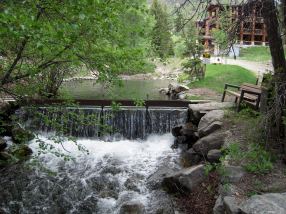 In efforts to further prepare STEAM students for success in the 21st century, THE STEAM ACADEMY is dedicated to the advancement of ecologically responsible practices and the development of related, cost-effective, innovative systems and clean technologies. When possible, schools having partnered with solar power companies will benefit from their facilitation and augmentation of student learning in solar energy through resident workshops and sponsored courses. SSI is to facilitate student studies in the advancement of biotechnology and will utilize available alternative fuels for any related needs. We will take another position on clean technology via water quality, as we encourage patron schools to incorporate the Keystone Flow water purification system into their campus water treatment facilities. Keystone Flow technology improves water quality while consuming an unprecedented minimum of energy, enabled by its unique DNA-helix-shaped flow. The life-symbolizing shape of DNA captivates people of all ages and sets the stage for further engagement in learning, research and responsibility, while also opening the door to preparatory study in mining, energy, and aerospace.
In efforts to further prepare STEAM students for success in the 21st century, THE STEAM ACADEMY is dedicated to the advancement of ecologically responsible practices and the development of related, cost-effective, innovative systems and clean technologies. When possible, schools having partnered with solar power companies will benefit from their facilitation and augmentation of student learning in solar energy through resident workshops and sponsored courses. SSI is to facilitate student studies in the advancement of biotechnology and will utilize available alternative fuels for any related needs. We will take another position on clean technology via water quality, as we encourage patron schools to incorporate the Keystone Flow water purification system into their campus water treatment facilities. Keystone Flow technology improves water quality while consuming an unprecedented minimum of energy, enabled by its unique DNA-helix-shaped flow. The life-symbolizing shape of DNA captivates people of all ages and sets the stage for further engagement in learning, research and responsibility, while also opening the door to preparatory study in mining, energy, and aerospace.
Learning is in the Way You Live
When possible, STEAM ACADEMY encourages schools, educators and other entities implementing our model to create an ambiance conducive to an environment of creativity and innovation. Higher order thinking, creativity, ingenuity – the energy involved in a place of such cultural and societal advancement – will be essential attributes to the integrity of STEAM ACADEMY. Advanced research teams have shown that aesthetics and ambiance actually serve to cultivate creativity and inventiveness, and this represents the values of THE STEAM TEAM.
Encouraging healthy lifestyle is also core to our philosophy. Along with learning and implementing earth-friendly practices, we encourage schools to offer comprehensive meal options based on relevant cultural traditions and dietary values. Students are required to engage in daily exercise. For any learning to be sustained, it must be taught with relevance, whereby students come to understand the personal value and importance of their studies, practices and expectations. STEAM educators must have a thorough understanding of this concept and reflect this in their instructional practices.
Not Just a School – A Hub
STEAM schools will work in partnership with local, national and international industry, willing university sectors and the local community. These partnerships will foster project and inquiry-based learning activities that promote social and emotional growth, in programs ranging from fine arts to advanced technology. Such inquiry / problem-based learning strategically facilitates mathematical thinking, and develops in students core engineering concepts and skills.
By design, our model requires that students are taught with balance of pedagogy- collaborative problem solving and inquiry must be equally balanced with direct instruction of core concepts, skills and basal knowledge. Such balance is necessary for efficiency, effectiveness and accuracy in other learning activities and is also required for the solidification of student understanding and academic concept mastery. Still highly relevant and beneficial to direct instruction approaches is our commitment to the full infusion of the fine arts and technology.
Facilitating a culture of creative expression, innovation and invention results in students having strength of character who achieve academically, thrive socially, and who possess the very skills pursued by the 21st century professional arena. Collaborative and creative pursuits lead to social health, strong leadership, integrity, compassion, motivation, dedication, responsibility, intuitive interpersonal perception and perspective… the list literally perpetuates. Furthermore, students will gain confidence, pride, encouragement, and continual motivation as they are given avenues to express, to create, to invent, and to succeed.
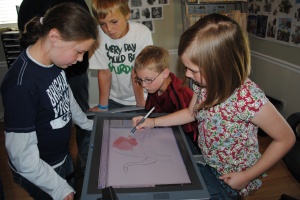 STEAM ACADEMY provides teachers with the tools to endow students with a tremendously enriched educational and personal development experience. Students graduate having immovable, strong moral character, unparalleled social strength, leadership skills based upon both humility and confidence, highly valuable, intuitive interpersonal perception and global awareness bringing the perspective necessary to contribute to the progress and advancement of the world which we share with now over seven billion individuals. STEAM students leave their K-12 experience enlightened, enriched and genuinely motivated for lifetime learning. They enter the world having achieved excellence in academics, entrepreneurial thinking, problem solving, critical thinking and engaged social responsibility. Their personally developed attributes – confidence, motivation, optimism, problem-solving, service orientation, mutual respect, compassion, moral integrity, social responsibility, global consciousness, environmental awareness – along with related, instilled habits for personal, community and globally healthy living – effectively prepare young people for a life of success and fulfillment in the 21st century.
STEAM ACADEMY provides teachers with the tools to endow students with a tremendously enriched educational and personal development experience. Students graduate having immovable, strong moral character, unparalleled social strength, leadership skills based upon both humility and confidence, highly valuable, intuitive interpersonal perception and global awareness bringing the perspective necessary to contribute to the progress and advancement of the world which we share with now over seven billion individuals. STEAM students leave their K-12 experience enlightened, enriched and genuinely motivated for lifetime learning. They enter the world having achieved excellence in academics, entrepreneurial thinking, problem solving, critical thinking and engaged social responsibility. Their personally developed attributes – confidence, motivation, optimism, problem-solving, service orientation, mutual respect, compassion, moral integrity, social responsibility, global consciousness, environmental awareness – along with related, instilled habits for personal, community and globally healthy living – effectively prepare young people for a life of success and fulfillment in the 21st century.
MODEL SCHOOLS
- San Francisco Academy of Arts and Sciences http://www.sotacad.org
- The Big Picture Learning http://www.bigpicture.org
- Khan Academy http://www.khanacademy.org
Related articles
- Are they Students or are they Innovators?
- ANOVA Science Unveils Scientific Inquiry-Based Approach to Distance Learning for Grades K-12
- Pearson and SMART Technologies Develop Innovative Interactive Whiteboard Program for the Inquiry-based Classroom
- Inquiry-based Learning
- How People Learn (and What Technology Might Have to Do With It)
- Flat Classroom K-2 project ‘Building Bridges to Tomorrow’
- The barefoot college
- OTR Links 11/14/2011
- Teachers and students in Mexico and the U.S. connect over birds
- Microsoft, British Council commit $2m to 80 digital hubs in Nigeria, others
- Global Innovation in Education – an International Roundtable using Cisco TelePresence
- Instructional Technology & Information Management- Meta Reflection Blog
- Greylock And Benchmark Lead $15M Round In Social Collaboration Platform For Classrooms Edmodo




